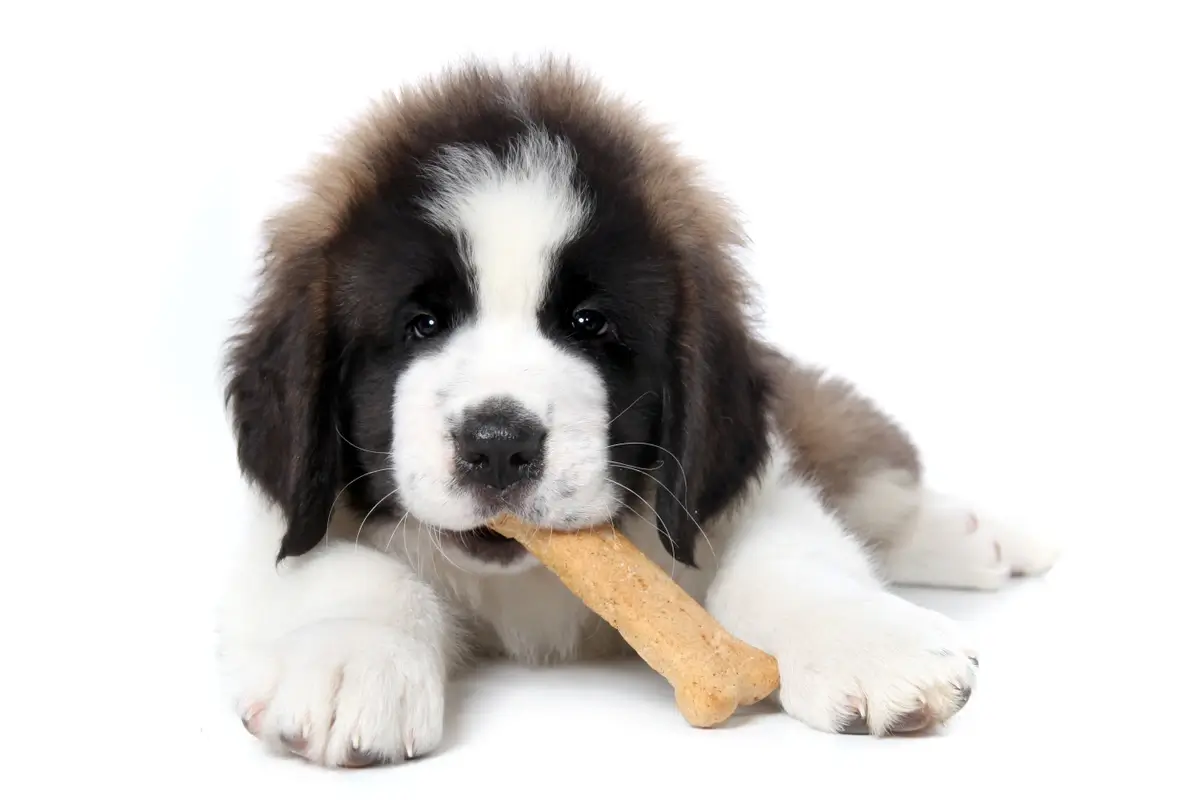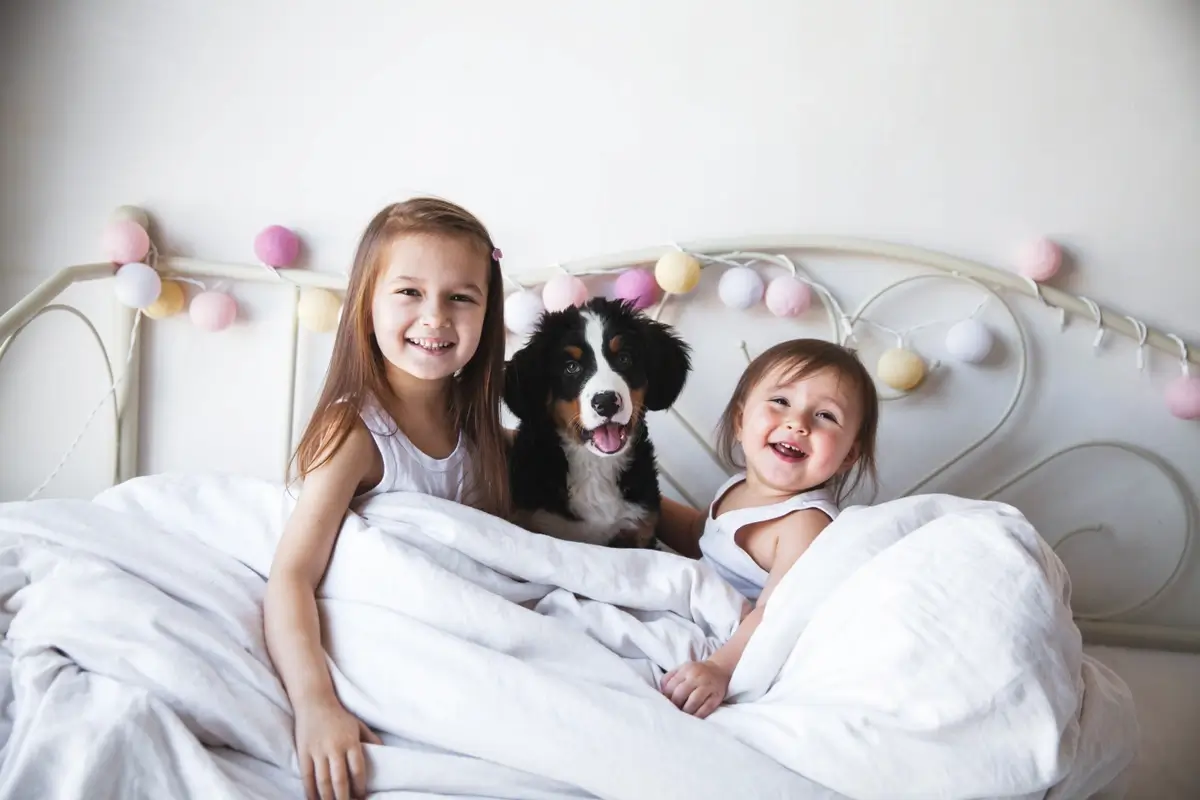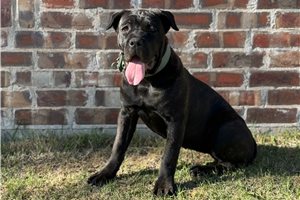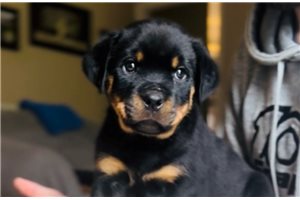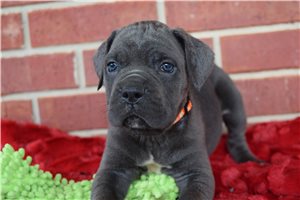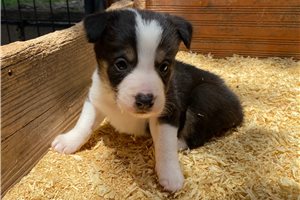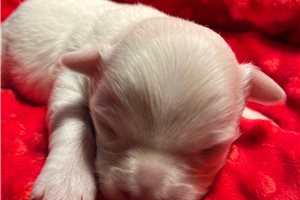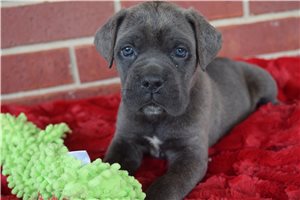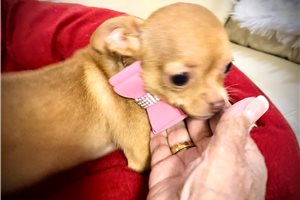It is easy to get caught up in the excitement of finding a new puppy for sale that you completely forget about preparing your home for a new puppy. However, your new puppy will quickly remind you of how you should have taken the time to research the best preparation methods for adding a new dog to your family!
It only takes a nanosecond for calamity to strike when there’s a puppy around! Thinking about every aspect of how you want to prepare your home will give you plenty of time to make sure you’re ready for your four-legged housemate. You want the best and smoothest introduction to your home, so start off on the right paw with tips for how to get your home ready for your new puppy.
How to Prepare Your Home by Thinking Like a Puppy
Many of the frustrations you may encounter aren’t due to puppy problems – they’re actually due to human-caused problems! Humans can either have unrealistic expectations or fail to anticipate how to reasonably respond to situations, therefore creating more work than is actually necessary. Just like you’re training a puppy, you’ll also have to “train” yourself, your housemates, and family members to adopt new habits for life with a puppy.
Puppy brains are learning and developing at a rapid rate. A puppy has an instinctual rhythm, so anticipate the routine so you can have things set up to facilitate a natural order. Puppies typically play, eat sleep, potty, play, eat, sleep, potty, and repeat.
Raising a puppy is a trial-and-error learning process, but you can cut down on the surprises if you know what to consider before bringing home a new puppy.
What does your puppy see from all levels?
In order to think like a puppy, you have to see their viewpoint from a variety of levels before they even come home. The following series of movements will have you truly assessing your living space to be ready for a puppy in your home. Starting from the floor level, moving up to puppy eye-level, and ending on a waist or counter level helps you know exactly which areas to fix before your puppy finds them herself!
How low can you go: Floor level
You and your housemates or family members should gather in the room or floor where your puppy will be the most. Lie down on your stomach. That’s right! Trust us that this is an excellent perspective to take if you want to know how to puppy-proof your home.
Take a good look around you. What do you see that a puppy may get? Move the furniture over to see what treasures lie under the couch or behind the TV stand. If your furniture cushions can be removed, check under there for pennies, writing utensils, crumbs, old remote control batteries, hair ties, etc.
If you have rugs with tassels, your puppy may tug on them, so consider turning under the edges or swapping decor. In addition, puppies may chew or pee on welcome mats or smaller rugs in the bathroom or kitchen.
Now is a perfect time to declutter areas to avoid unwanted destruction! In addition to decluttering, you may have to adopt new habits and routines when a puppy is around. Many family members may leave socks and shoes on the floor after coming home. However, puppies tend to be excellent purveyors of fine products and will skip your old gardening clogs in favor of your new Nike Blazers every time!
Any “landing zones” found in entryways or mudrooms are also fair game. Boots, umbrellas, backpacks, and sports equipment resting on the floor can be tempting to your puppy. If you have a laundry room, make sure to clean up any piles of clothing.
Now that you’ve had a thorough floor-level look around and everything is all clear, do a good vacuum/mop of your floors to get a fresh, clean start.
Get a head start: Eye-level
You can sit up from your supine position, but don’t get up all the way yet! By sitting on the floor, you’ll be able to view exactly what your puppy sees at eye level. It’s not only their little mouthing teeth you have to worry about – their enthusiastic wagging tail can wipe out a coffee table board game in one swish. Your clutter may be gone and your floors are clean, but it’s time to check these eye-level places:
- Items on low pantry, coffee table, furniture, and bookshelves (including remote controls!)
- Cabinets in bathrooms and kitchens containing potentially products toxic to puppies
- Baseboards and wall corners
- Furniture legs
- Cords, outlets, and wires
- Small trash cans
- Magazine racks
- Potted plants
- Tables with lamps, vases, picture frames, and decorative items
- Floor-length curtains, slats, blind cords
- Coats on pegs low enough for a puppy to grab
- The toilet depending on the size of your puppy
Several of these items can be expensive to fix, especially if you are displaying sentimental items or heirlooms, and they can cause severe illness if ingested or cause injuries if a puppy knocks over something or pulls an item down on top of them. Have a plan to keep frequently used items like remote controls in side table drawers or potentially harmful cleaning products up high. Close the toilet lids or the bathroom door. Puppy-proof cabinets with babyproofing devices. Make sure all potted plants are safe for dogs. And above all, puppies can nudge open closet doors and feast on the most delicious shoe buffet, so be extra careful to shut that closet door!
Don’t “waist” time assessing counter-level views
Now you can stand up! Take a nice stretch before you consider the next level of thinking like a puppy – items that are at the waist and counter level.
Take a look at your furniture. Decide if your puppy will even be allowed on your furniture. If so, you may want to designate a special piece just for them or buy a washable cover to protect your furniture. Note any decorative pillows or throw blankets that a puppy can destroy in seconds. It doesn’t take long for you to turn your back and turn around again, only to see stuffing flying everywhere!
Larger breeds love going “counter surfing” to see what tasty morsels are left out on counters or what dish towels they can pull off the oven handle. Some taller puppies have been known to steal entire pizzas as families are busy being called to dinner, fixing drinks, or washing their hands.
A trash can or recycle bin is a really fun find for a puppy! So many smells, so many tasty morsels! Some breeds like Golden Retriever puppies have a penchant for used paper products. “The dog ate my homework” is a totally valid reality for homework and other school supplies that are left out on the dining room table or desk not put away.
Growing pains
Consider the size of your puppy’s breed as it grows. If you have a small dog, you may be done after one of these assessment steps. However, bigger, growing puppies will soon have access to, say, the toilet rather quickly within just a few months, so you need to consider future size rather than just the size your puppy is when it arrives.
Legal Matters: Check Your Lease Agreement
If you rent or lease, don’t try to break terms and sneak in a puppy. Prepare by knowing what’s in your lease, stipulations, any pet fees or refundable (or non-refundable) deposits, breed restrictions, noise levels, and especially what any damage clauses entail.
Know What to Expect With Puppy Teething
You may have thought you bought a puppy for sale, but in reality, you actually bought a tiny landshark! Teething puppies have razor-sharp teeth and are compelled to chew on anything and everything. Be prepared by buying durable dog toys that are hard to destroy or toys great for heavy chewers.
In just around 8 short months, puppies grow two complete sets of teeth! A puppy’s first teeth will erupt around 2 weeks old. By around 10 weeks, all baby teeth have grown in. Their adult teeth begin growing, and puppies can lose their baby teeth at 4-6 months of age.
When you find a lost tooth, your eye may also travel to a nearby furniture leg or baseboard to find it completely destroyed with slash marks, peeling paint, deep gashes, and a ruined structure. While all breeds will go through the teething process, some of the top breeds that are heavy chewers include:
- Labrador Retriever puppies
- Chihuahua puppies
- Beagle puppies
- Border Collie puppies
- Boxer puppies
- Australian Shepherd puppies
Some puppy owners might not realize their teeth fall out just like human teeth, and you’ll find them in the strangest places. You’ll quickly be reminded though when you step on one with the pain rivaling what it feels like to step on a Lego! All puppy teeth can feel like shards of glass sometimes, but some breeds naturally have sharper teeth than others:
- Cane Corso Mastiff puppies
- German Shepherd puppies
- American Pit Bull Terrier puppies
- Siberian Husky puppies
- Bulldog puppies
- Rottweiler puppies
There are a few things you can do to prepare your home from a teething puppy’s destruction. The first thing is to use specialized pet-safe, anti-chewing spray products designed to deter teething by making items taste bad. There are also anti-chew products to protect items in the house, such as cord protectors, furniture leg covers, and baseboard and wall shields. Have lots of specialized toys and bones to teach them appropriate places to teethe.
Set Up Designated Puppy-Focused Areas
There is nothing worse than being caught off-guard and ill-prepared when you need it the most when it comes to your puppy. Maybe your leash is missing when your puppy has to go relieve itself outside, you’ve run out of food, or an acute emergency has you scrambling to look up an after-hours vet while losing precious time. Having designated puppy-focused areas of your home will help you stay organized and prepared for any challenge that may arise.
Outside areas
Regardless of if you live in the country or in a high-rise condo, every puppy will need some sort of access to the outside, whether it be for exercise or potty needs. Now is the time to explore your neighborhood for safe walking routes or designated potty areas.
As the American poet Robert Frost penned, “Good fences make good neighbors” in his poem "Mending Wall." This line is certainly true with pet ownership! A fence keeps your dog safe and secure, but it also keeps out unwanted neighborhood animals who roam or are not on a leash as well as any wandering children or neighbors. You’ll need to consider the type of fence you’re allowed to get coupled with the breed you want to own, as some breeds are high jumpers and give Houdini a run for his money. You’d hate to put in a fence on your own only to find out you violated HOA covenants by not choosing a certain type of approved fence, so do your research.
If you have a yard, see if the chemicals and pesticides you use are pet-safe, and store those away from curious puppies. Do you have a garden? Your puppy may like to dig. Check if any plant species you have are toxic to pets. Never leave your dog tied out in the dog house!
Eating area
Decide where your puppy will eat. You may want to put it near your family table, as dogs are pack animals and like to eat with their family. If you have a bigger breed, you might choose an elevated food and water bowl setup. Special easy-to-clean mats that absorb water are great for messy eaters and drinkers.
Sleeping arrangements
Will your pet sleep in its own bed? If so, there are lots of pet beds to choose from. Will your pet sleep in your bed? You may need stairs or a special blanket where you want them to sleep. Will your puppy sleep in a crate? If so, find a cozy blanket or a snuggle puppy and make sure the crate is big enough to turn around and stand up in and that it closes securely.
A variety of puppy toys
Choosing the best toys for puppies is a huge part of keeping a growing puppy happy! You’ll need to have enough toys and chew things that help alleviate teething and keep your puppy mentally stimulated and occupied.
Designate one accessible place for the toys to stay for easy cleanup. You can even train your puppy to clean up after itself – wouldn’t that be something? Don’t overwhelm your puppy with all the toys all at once; rather, rotate them to keep things fresh and fun.
Gates and crates
Baby and pet fences can create a play area to contain your puppy but allow freedom of movement within a safe, enclosed area. They can keep pets out of trouble and unwanted spaces such as closed-off rooms or staircases.
A crate is a useful tool for training, and sleeping, and serves as a safe space to keep your puppy when you’re away or when you need the pup not to be underfoot. You can put the crate in a quiet place away from hustle and bustle. Over time, your puppy will learn to associate his crate as a safe retreat.
One-stop shop
One small puppy can generate so many items! You’ll want to consider one designated, one-stop shop hosting all your doggy-related items if space allows. Think about food storage, leashes, waste bag refills, brushes and combs, potty training supplies, and more. You may want to use a wall organizer, special bookshelf, pantry, or closet – whatever is both convenient and out of the way.
Safety and medication station
In case of an emergency, it’s vital to know where to find information – and quickly. Clearly post vet and emergency vet locations and numbers in one place where you keep medication and a puppy first-aid kit safely stored. You may also want the numbers to your groomer, a few kennel options, or trusted friends on the wall or fridge that can help out at a moment’s notice. Put any fire escape plans or affix a special sticker to the front window letting paramedics or firefighters know there is a pet inside.
Be sure to store all unsafe food, such as chocolate, grapes, and xylitol, away from puppies.
Have cleaning and grooming supplies handy
You may be wondering how to potty train your puppy. It’s always a great idea to have all you need on hand before beginning the process. Your puppy will definitely be experiencing accidents as she gets the hang of where to relieve herself. Choosing non-toxic, pet-safe cleaning supplies will help keep your home smelling fresh while protecting your floors and furniture.
If you have a heavy shedding dog, investing in a great vacuum cleaner will be an amazing gift to tackle the hair! Pet rakes, de-hairing sponges, and lint rollers are also great to combat hair.
Having simple grooming tools on hand like nail clippers, brushes, and combs will help keep your pet looking good with a healthy, well-maintained coat.
Technology Options Can Help You Prepare for a New Puppy
Technology can be an excellent way to help you prepare for your puppy that many new parents might not even think about. Hands-free, voice-activated home devices like Alexa, Google Nest, or any similar program can help you in several ways:
- Schedule upcoming appointments
- Set reminders for family members to walk your puppy
- Make medication refills
- Track pet-related product packages
- Manage recurring orders like food or monthly subscription boxes, or refills
Pawrade Can Help Prepare You For a New Puppy
Careful, thoughtful preparation is key when bringing home a new puppy. Our Puppy Concierge team members are experts at helping you find the perfect dog for sale. As fellow puppy owners, we know the importance of having a happy and healthy puppy. Every puppy is backed by our comprehensive health guarantee. Contact us today at (888) 729-8812.
*Paid partnership with our friends at Chewy


